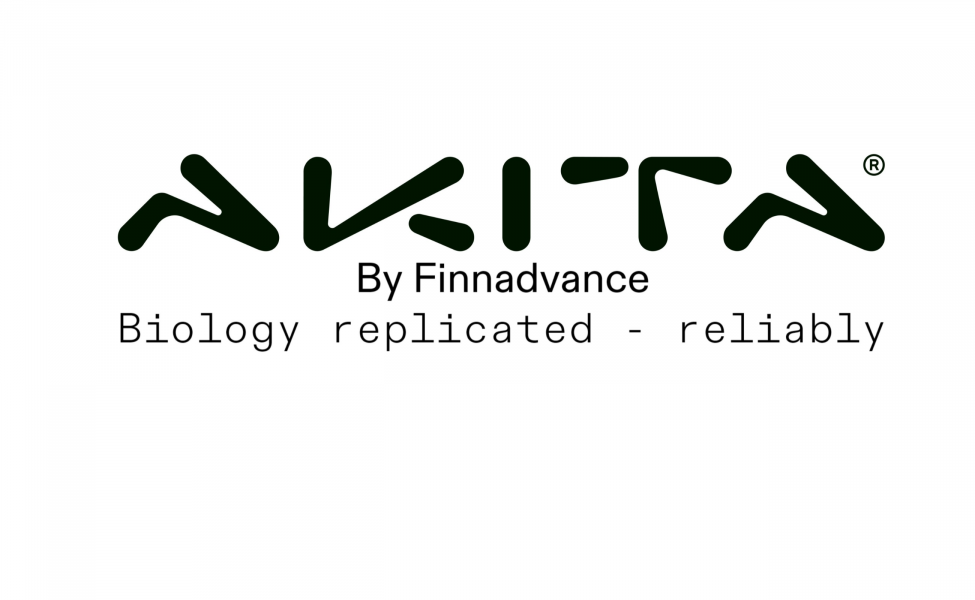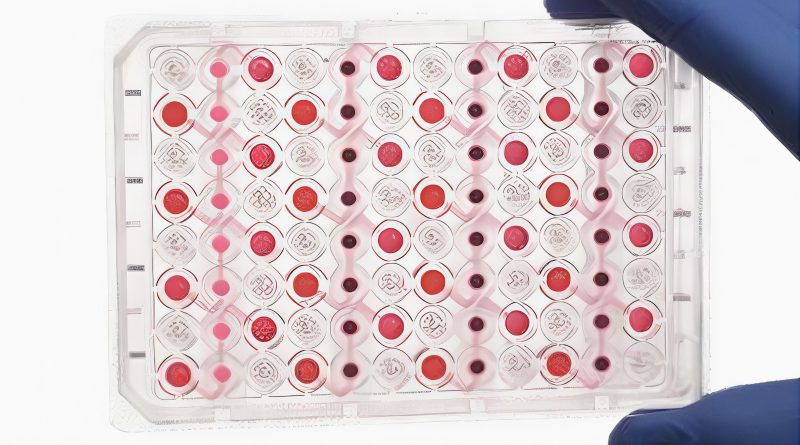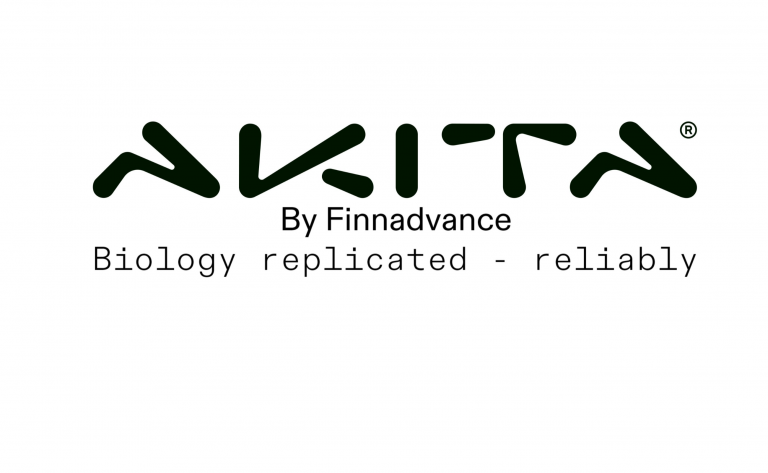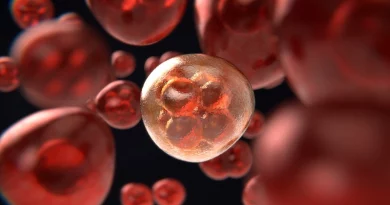Multi-organ Microfluidic Platform – AKITA® Plate96-Multi

The multi-organ microfluidic platform AKITA® Plate96-Multi revolutionises in vitro research by enabling the cultivation of 2-4 organ models simultaneously within a shared microfluidic circuit.
Designed for experiments requiring linked organ systems, this platform offers unparalleled flexibility in configuring organ models, facilitating research of inter-organ communication and systemic effects. Ideal for research involving vascular barriers, organoid cultures, and endothelial-epithelial interfaces, the Plate96-Multi advances drug discovery by providing a scalable and physiologically relevant system for evaluating therapeutic candidates.
By mimicking the complexity of organ interactions and offering comprehensive data output, this innovative multi-organ microfluidic platform supports predictive drug testing, improving the translational success rate of novel therapies.
Multi-organ Microfluidic Platform for Advanced In Vitro Modeling
This cutting-edge Multiorgan-on-a-chip (multi-OoC) platform addresses the challenges of modeling complex biological interactions, providing researchers with flexibility, scalability, and precision in generating predictive data for therapeutic development. By mimicking inter-organ communication and systemic responses, the Plate96-Multi microfluidic platform is a valuable resource for drug discovery, toxicology, and translational research.
Linking Multiple Organs-on-Chip for Complex Studies
The AKITA® Plate96-Multi allows researchers to integrate up to four organ models within a single plate, creating a shared microfluidic circuit that facilitates the study of inter-organ interactions. With the capacity for 8-16 independent tests per plate, this Multiorgan-on-a-chip (multi-OoC) platform offers unparalleled efficiency for investigating systemic effects in a controlled and reproducible environment.
By linking multiple organ models, the Plate96-Multi enables studies that mimic in vivo physiology more closely than traditional static cultures, enhancing the translational relevance of experimental results.
Designed for Seamless Compatibility and Automation
Engineered to fit the SBS-standard 96-well plate format, the Plate96-Multi integrates seamlessly with existing laboratory workflows. It is compatible with robotic liquid handlers, automated imaging systems, and high-throughput screening instruments. This ensures that researchers can incorporate the platform into routine operations without requiring additional equipment, reducing the complexity of the experimental setup.
The use of low-adsorption plastics eliminates the drawbacks of PDMS, ensuring reliable results by minimising compound loss and adsorption. This design is particularly advantageous for experiments involving small molecules or low-concentration compounds.
Dynamic Perfusion for Physiological Relevance
The AKITA® Wave Rocker enables pump-free perfusion across the Plate96-Multi, recreating physiological shear stress conditions within a shared circuit. The Wave Rocker supports customisable settings, with adjustable angles (-40° to +40°) and speeds (1-20 rpm), allowing precise control over fluid dynamics.
Designed for scalability, the Wave Rocker accommodates up to 4 plates simultaneously, with the option to upgrade to 16 plates. Its compatibility with standard cell incubators ensures that experiments can be conducted under optimal conditions without the need for specialised infrastructure.
2D PET Membrane and 3D Scaffold Technology for Physiologically Relevant Models
The multi-organ microfluidic platform incorporates standard porous membranes and innovative 3D Bio-Spun™ Scaffolds, offering exceptional flexibility. The standard 2D PET membranes are available in pore sizes of 1 µm, 3 µm, and 10 µm, catering to varying experimental needs such as molecular exchange, direct cell interaction, and cell migration.
For more complex studies, the platform includes a variety of 3D Bio-Spun™ Scaffolds, which provide a physiologically relevant environment. These scaffolds are available in biodegradable options, such as PDLGA and PLLA, ideal for tissue regeneration studies, as well as nondegradable PET and PU scaffolds for long-term applications.
By combining standard 2D membranes with physiologically relevant 3D scaffolds, the Plate96-Multi enhances the realism and precision of in vitro models. These materials allow researchers to simulate complex cellular interactions, study dynamic biological processes, and generate data that translates effectively to clinical contexts.
Optimised for Diverse Preclinical & Drug Discovery Research Applications
The multi-organ microfluidic platform is designed for versatile research applications including metabolism, tumor metastasis, and vascularized tissue co-culture. In drug metabolism studies, it allows researchers to observe how compounds are processed across different organ systems. In tumor metastasis research, it facilitates the investigation of cancer cell migration and interaction with various tissues. The platform’s capability to support vascularized tissue co-culture is crucial for examining the complex interplay between different cell types and their environments.
The AKITA® Plate96-Multi is ideal for applications including:
- Vascular Barriers: Investigate the creation and function of vascular barriers under both physiological and pathological conditions.
- Organoid and Tissue Cultures: Support the growth, differentiation, and maintenance of organoids and engineered tissues.
- Endothelial-Epithelial Barriers: Study the structural and functional properties of tissue barriers critical for understanding immune responses and drug permeability.
Robust Library of Protocols for Advanced Research Applications
The Plate96-Multi is supported by a robust library of protocols designed for advanced research, including:
- Blood-Brain Barrier Models: Cultivate primary-cell models to study permeability and barrier integrity.
- Cerebral Organoid Development: Grow IPSC-derived cerebral organoids for neurodevelopment and disease studies.
- Vascularization and Immune Cell Migration: Explore angiogenesis and immune cell dynamics using primary cell models.
- Vascular Sprouting: Investigate the mechanisms driving new blood vessel growth.
- Cancer Spheroid Generation: Develop tumor spheroids for cancer research (protocol coming soon).
- Skin and Tissue Models: Cultivate primary-cell-based skin and tissue constructs for dermatology and wound healing studies.
- Lung and Colon Models: Study vascularized and non-vascularized lung and colon tissues to assess drug permeability and response.
- Bone Models: Investigate bone tissue dynamics using U2OS cells.
Flexible Configurations for Custom Multi-organ Systems
The Plate96-Multi is available in three configurations, each tailored to specific experimental needs:
- Plate96-Multi2: Two linked organ systems, allowing up to 16 tests per plate.
- Plate96-Multi3: Three linked organ systems, enabling 8 tests per plate.
- Plate96-Multi4: Four linked organ systems, supporting 8 tests per plate.
These configuration options provide researchers with the flexibility to design experiments that reflect the complexity of multi-organ interactions, making it ideal for both exploratory and targeted studies.
Advanced Analytical Capabilities for Comprehensive Data
The Plate96-Multi is designed to support a range of readouts, enabling researchers to gather detailed insights into cellular and molecular processes:
- Imaging: Supports automated and manual fixed/live imaging using standard and confocal microscopes.
- Barrier Integrity: Measured rapidly and accurately using the AKITA® TEER Lid or fluorescent probes.
- Immune Cell Migration: Analyzed via flow cytometry (FACS) and microscopy for granular insights into cell dynamics.
- Cell Viability: Evaluated through formazan-based assays and live-cell imaging.
- Sampling for Downstream Analysis: Enables the collection of DNA, RNA, proteins, and live cells for omics studies, as well as culture media for PK/PD analysis.
Accelerating Drug Discovery and Translational Success
The AKITA® Plate96-Multi offers researchers an unparalleled tool for investigating complex biological systems. By replicating inter-organ interactions and enabling high-resolution data collection, the platform supports the development of more predictive in vitro models that can improve the success rate of drug discovery programs. Its ability to streamline workflows, improve reproducibility, and deliver physiologically relevant results makes it a cornerstone technology for advancing preclinical and translational research.
AKITA® Plate96-Multi Specifications
The Plate96-Multi is built to meet the highest standards in experimental design and data reliability:
- Plate Format: ANSI-SLAS-standard 96-well plate.
- Independent Tests: Up to 16 tests (Multi2), 8 tests (Multi3 and Multi4).
- Chamber Volumes:
- Multi2: 540 µL per test.
- Multi3: 660 µL per test.
- Multi4: 840 µL per test.
- Flow Rate: Adjustable from 0–0.4 µL/h for vascular shear stress simulation.
- Membrane Pore Sizes:
- 1 µm: For segregated co-cultures.
- 3 µm: For physically interacting co-cultures.
- 10 µm: For cell migration studies.
- Bio-Spun™ Membranes: Biodegradable, biocompatible scaffolds for advanced tissue engineering.
- Membrane Area: 7.0 mm².
- Focal Distance: 400 µm from plate bottom to membrane.
- Membrane Thickness: 10–15 µm.
For more information please contact AKITA today.
Quick Contact AKITA





